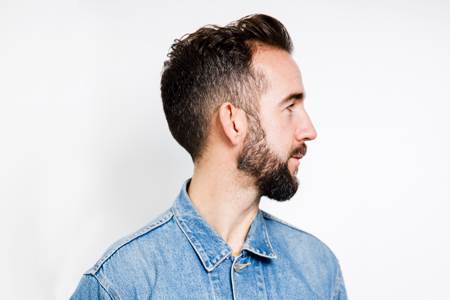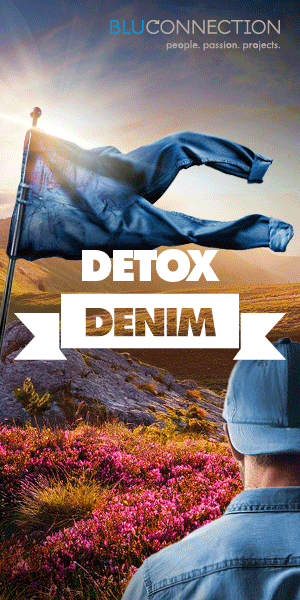Rowan Hunt: 50 years of damage won’t be fixed overnight

The UK-based denim consultant says everyone wants to save the planet but it can be hard for big high-street retailers to turn the ship as fast as they’d like. He recommends incremental steps and road maps – small steps can lead to a big impact.
Can you tell us a bit about your background and what you’re working on now?
I’m a responsible denim specialist, working from fibre to finished garment. I started my career at a supplier to the high street which I would highly recommend to everyone as it’s the best training you can hope for! In this first job I had access to both a garment technologist and fabric technologist, so any questions I had could be answered easily and I learnt a lot from them. I learnt why fabrics behave in certain ways and came to understand and pre-empt potential issues in production (for example, pigment moleskin is a nightmare). I also learnt first hand out at the factories and was shown how to do spot checks and check sewing machines regulations, etc. After this I went on to work at different brands, such as Next, Debenhams and Fat Face, where I learnt even more and was lucky enough to have great teams in which I could pass on what I had learnt as I went.
After 15+ years, in 2020, I finally decided to ‘go it alone’ and start developing ranges for fabric mills and garment producers. I love working in the industry but am also trying to see how I can share my knowledge back into it.
I’m lucky that I get to meet a lot of really interesting people and can share key details about fabrics, garments and washing to educate or inform. I also love to do things like Kingpins ED where I can share industry insights and hopefully inspire the next generation of developers/designers.
I do a lot of personal experiments and research on anything that inspires me, from biodegradability to light sensitivity dyes. I am also studying Mandarin so I can speak directly to laundry experts. There is a whole hidden world out there to be learnt from.
What do you enjoy about working with young designers through Transformers ED?
I love to do this. Transformers is such a fantastic conference and the mix of speakers makes it hugely informative. It is designed for students but I also see a lot of industry people there. Apart from conferences such as Transformers, there is a huge lack of education on denim and everything that needs to be considered within the industry. Without being able to travel and see first-hand at junior level, it is tricky to develop the knowledge base you need and it leaves lots of holes in training.
I was lucky enough to be invited on to the first Transformers ED to talk about a sustainable (not the word I would use now) journey at Debenhams. I discussed our focuses and how we had managed to get there.
You have worked for mass market retailers, how easy or difficult is it at the lower price points to add in sustainability criteria but keep it within a price range that those consumers will pay?
This is a really good question and one that gets side-stepped or not focused on. I work on the ethos of ‘small steps can lead to a big impact’. What I mean by this is looking at all the elements and doing 1% better each time will get you on the journey. There’s no quick fix here. Around 50-70 years of damage won’t be fixed overnight.
I always encourage brands and retailers to make these small steps. They want to do organic but can’t due to price. Ok… so we do buy conventional cotton which comes from a non-traceable black hole? Or could we look at BCI as the minimum we accept and then look at adding in some recycled content like post-consumer waste (PCW) cotton? Generally, the price increase is negligible by adding in just 5%, so why not ask and see what can be done? Adding 20% recycled cotton might only give you a price increase of 7% … look at all your options and build a road map to where you want to get to.
Next step is a deeper dive into dyes and chemicals (laundry and fabric process). Is natural dye better than synthetic?
Things like Fibretrace and tracing factually where things have come from means you can actually see your footprint (and so can your customer). I have been lucky enough to meet the inventor and discuss this at length and can see the huge benefits!
Where do you think the UK sits in terms of a global standing in the denim industry, which parts are we good at or lacking?
In the UK we have a lot of good people doing good things. Look at people like Salli Deighton. She shares everything, all her knowledge, and never reserves anything just for herself. Now she is building a laundry in the UK to reduce waste, keep garments in circulation, repurpose garments that aren’t sold and if that’s not enough she will open her doors to educate everyone who wants to learn. Wow!
The denim industry in the UK definitely has a “could do better” mark. We do have great start-up brands who can begin with sustainable principles, promote them and be true to them. With smaller production they use fewer factories so, in theory, keeping things sustainable is easier to police.
But on the other side of the coin are the juggernauts of the high street. They may want to do something to improve but can’t turn the ship as fast as they want. Having worked within a lot of these bigger companies I appreciate that they have overheads and margin dynamics that make it very hard to change anything at speed, but this is why road maps are the best. Map and follow progress.
For me, the hardest thing is knowing that people will agree, everyone wants to save the planet and wants to do good but it can be very hard to do so. For example, the next generation of students could decide that they will make things 10% more sustainable but actually, this will cost 30% more... so how do we bridge the gap? These numbers are not official, just based around what I have found day to day whilst trying to do my job. How do we bridge the gap?
What are you excited about at the moment?
There are lots of exciting things coming! Getting out to Kingpins will be great as I have only done Bluezone in the last two years. Meeting people, discussing ideas and what they have found will be great. Face to face we tend to let more out as its not on the paper trail.
For me it is all about doing things with purpose. Last year, my partner and I did two projects called “products with purpose”. Close to my heart (and also my kids’) are all the animals on the WWF endangered species list. We chose three animals on the list (Hawksbill Turtle, North Atlantic Right Whale and the Galapagos Penguin) and made some denim animals to try and raise awareness in our small way.
We tried to think consciously about every aspect of the design. We used all cotton threads, found UK wool to wad them and, of course, all the denim is fabric waste from my hangers/legs. All profits went to WWF, which is amazing!
We also designed a Denim Bee to raise awareness about the importance of bees to our environment. They pollinate something like 80% of all food crops! If they die out what happens to us? Profits from this went to Bees Abroad, which is a brilliant project. They build beehives and train beekeepers in Africa and India. This helps the ecosystems and provides food and income for these villages.
This year, we will try do more and take it to the next level.













